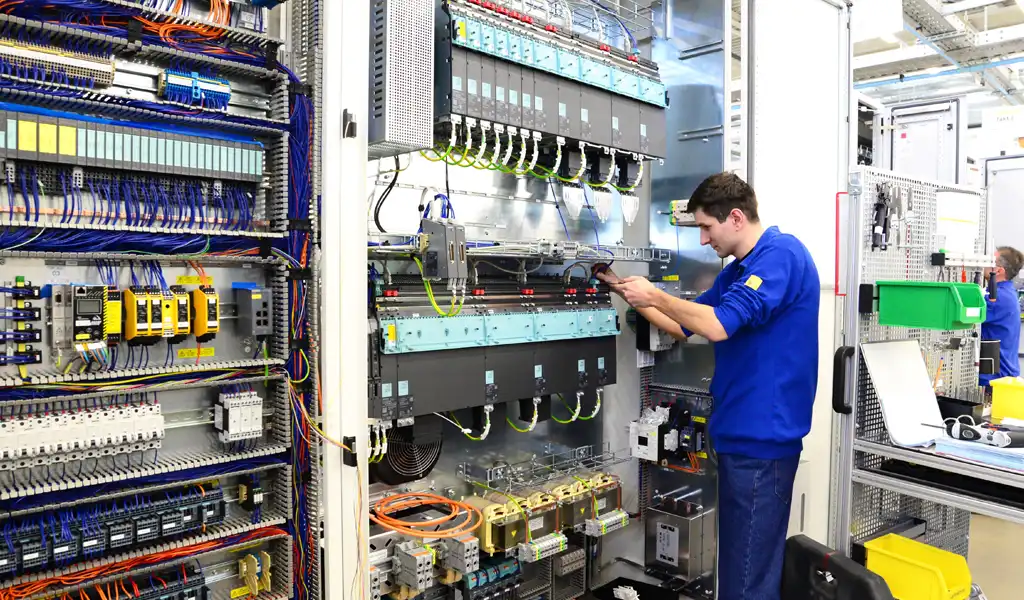Preventive Maintenance in Electrical Installations: Ensuring Operational Continuity
Preventive maintenance in electrical installations is an essential practice to ensure the efficient, safe, and continuous operation of electrical systems. This proactive approach not only minimizes risks but also optimizes equipment performance, reduces operational costs, and extends their lifespan. In this article, we will explore the importance of preventive maintenance, best practices, and how it contributes to the safety and energy efficiency of businesses.

What is Preventive Maintenance in Electrical Installations?
Preventive maintenance involves inspecting, diagnosing, and performing adjustment or replacement tasks on electrical systems before a failure occurs. This approach is based on a regular, structured plan that prevents unexpected interruptions and ensures compliance with electrical safety regulations.
Main Advantage: While corrective maintenance acts after a failure, preventive maintenance reduces the chances of these failures, ensuring operational continuity.
Importance of Preventive Maintenance
1. Reduction of Failures and Downtime
- Early detection of issues prevents costly interruptions in operation.
- Scheduled maintenance shutdowns are more economical than emergency repairs after a breakdown.
2. Increased Safety
- Poorly maintained electrical systems are a leading cause of fires and workplace accidents..
- Regular inspections ensure proper installation and functioning of protection devices like differential switches and grounding systems.
3. Energy Efficiency
- Well-maintained electrical equipment consumes less energy and operates more efficiently, leading to savings on electricity bills.
- Regular cleaning and calibration of equipment reduce energy losses.
4. Regulatory Compliance
- Laws and regulations, such as the Low Voltage Electrotechnical Regulation (REBT), require that electrical installations meet certain maintenance standards.
- Preventive maintenance ensures that official inspections pass smoothly.
Best Practices in Preventive Maintenance
1. Regular Inspection
- Review key components, such as switches, transformers, and electrical panels, to detect signs of wear or corrosion.
- Assess the condition of cables and connections to prevent overheating.
2. Equipment Cleaning
- Remove dust, dirt, and debris from electrical systems, especially in industrial environments, where these factors can interfere with performance.
3. Functional Testing
- Perform continuity, insulation, and resistance measurements to identify potential hidden issues.
- Simulate controlled failures to verify the response of protection systems.
4. Updating Obsolete Components
- Replace old equipment with more modern and efficient technologies, such as smart circuit breakers and remote monitoring systems.
5. Staff Training
- Train employees on the proper handling of electrical systems and the detection of potential anomalies.
Benefits of Preventive Maintenance for Operational Continuity
Preventive maintenance offers clear advantages at both operational and strategic levels:
- Increased Productivity: Minimizes interruptions and ensures electrical systems are always in optimal condition.
- Cost Reduction: Regular small adjustments are more economical than major repairs or replacements.
- Extended Equipment Lifespan: Keeping systems in good condition prolongs their life cycle, maximizing the initial investment.
- Operational Peace of Mind: Companies can focus on their core operations without worrying about potential electrical failures.
Maeldar: Our Commitment to Safety and Efficiency
At Maeldar, we know that every second counts when it comes to ensuring the operational continuity of your electrical installations. That’s why we offer preventive maintenance services designed to meet the specific needs of each client.
Our services include:
-
Regular and detailed inspections conducted by certified experts.
-
Customized solutions to optimize the energy performance of your systems.
-
Clear technical reports to help you make data-driven decisions.
Frequently Asked Questions about Preventive Maintenance in Electrical Installations
1. How often should preventive maintenance be performed?
The frequency depends on the type of installation and its use, but it is generally recommended to perform inspections semi-annually or annually.
2. What regulations govern electrical maintenance in Spain?
The Low Voltage Electrotechnical Regulation (REBT) sets the basic requirements to ensure the safety and efficiency of electrical installations.
3. Is preventive maintenance more expensive than corrective maintenance?
No, preventive maintenance is usually more economical in the long run, as it avoids major repairs and prolonged downtime.
4. Which equipment requires more frequent maintenance?
Transformers, electrical panels, and protection systems often require periodic checks to ensure their proper functioning.
5. How can I tell if an installation needs urgent maintenance?
Signs such as frequent outages, overheating, unusual noises, or tripping circuit breakers indicate the need for immediate inspection.
We advise you
Whether you need guidance on equipment selection, process optimization or the implementation of new technologies, we are here to help you clear up any doubts you may have.
You can also visit us at: OUR INSTALLATIONS
